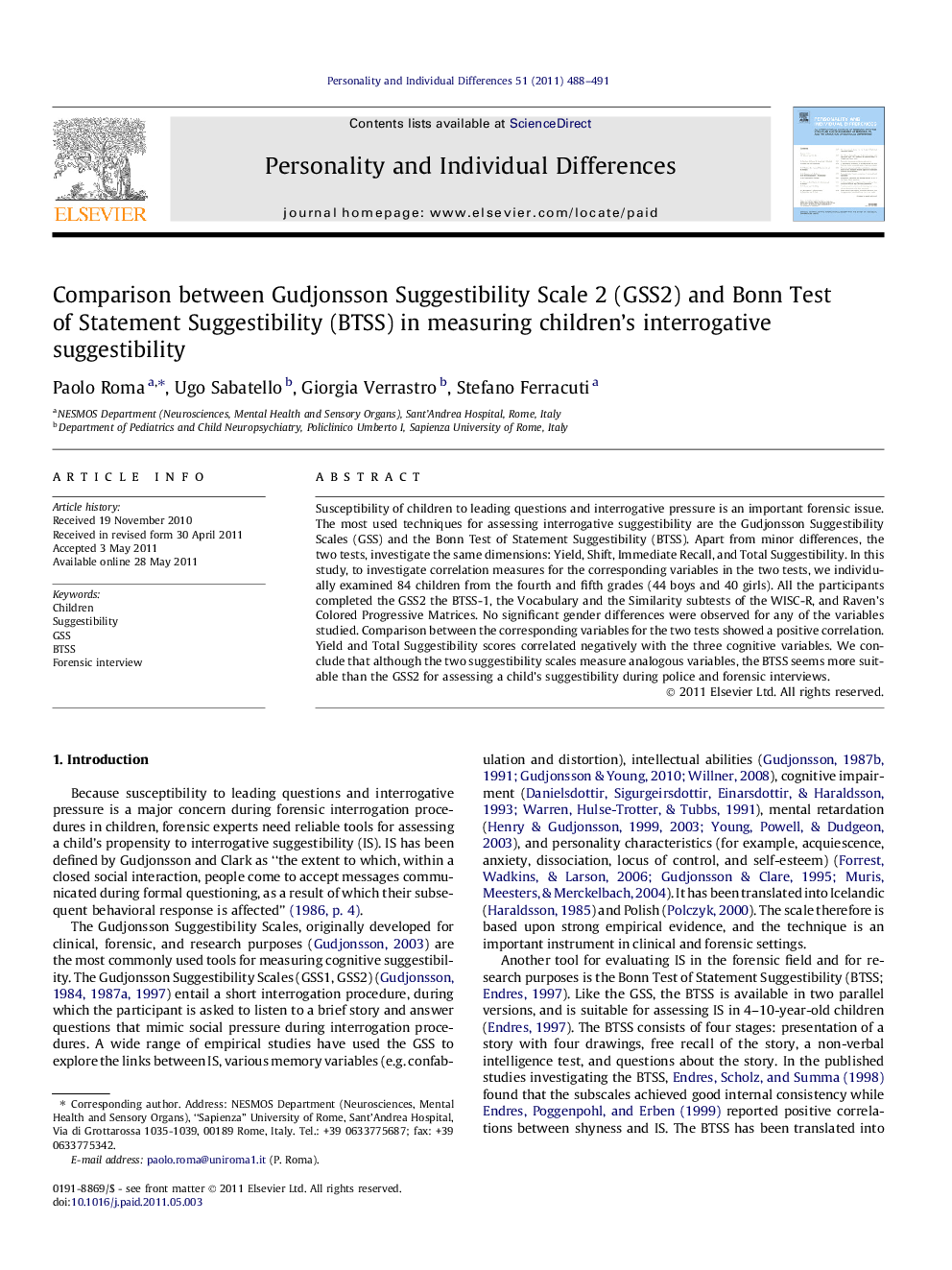| Article ID | Journal | Published Year | Pages | File Type |
|---|---|---|---|---|
| 891503 | Personality and Individual Differences | 2011 | 4 Pages |
Susceptibility of children to leading questions and interrogative pressure is an important forensic issue. The most used techniques for assessing interrogative suggestibility are the Gudjonsson Suggestibility Scales (GSS) and the Bonn Test of Statement Suggestibility (BTSS). Apart from minor differences, the two tests, investigate the same dimensions: Yield, Shift, Immediate Recall, and Total Suggestibility. In this study, to investigate correlation measures for the corresponding variables in the two tests, we individually examined 84 children from the fourth and fifth grades (44 boys and 40 girls). All the participants completed the GSS2 the BTSS-1, the Vocabulary and the Similarity subtests of the WISC-R, and Raven’s Colored Progressive Matrices. No significant gender differences were observed for any of the variables studied. Comparison between the corresponding variables for the two tests showed a positive correlation. Yield and Total Suggestibility scores correlated negatively with the three cognitive variables. We conclude that although the two suggestibility scales measure analogous variables, the BTSS seems more suitable than the GSS2 for assessing a child’s suggestibility during police and forensic interviews.
► Gudjonsson Suggestibility Scales (GSS) and Bonn Test of Statement Suggestibility (BTSS) are the most used tools for assessing interrogative suggestibility (IS). ► We investigated correlation for the corresponding variables for the GSS and the BTSS in a group of children. ► We assessing also if linguistic competence, logical abstraction in verbal modality and logical abstraction in visuospatial modality, protected children from IS. ► Measures for the two suggestibility scales were positively, although variably, correlated. ► Cognitive abilities help children to withstand leading questions but not help after negative feedback.
